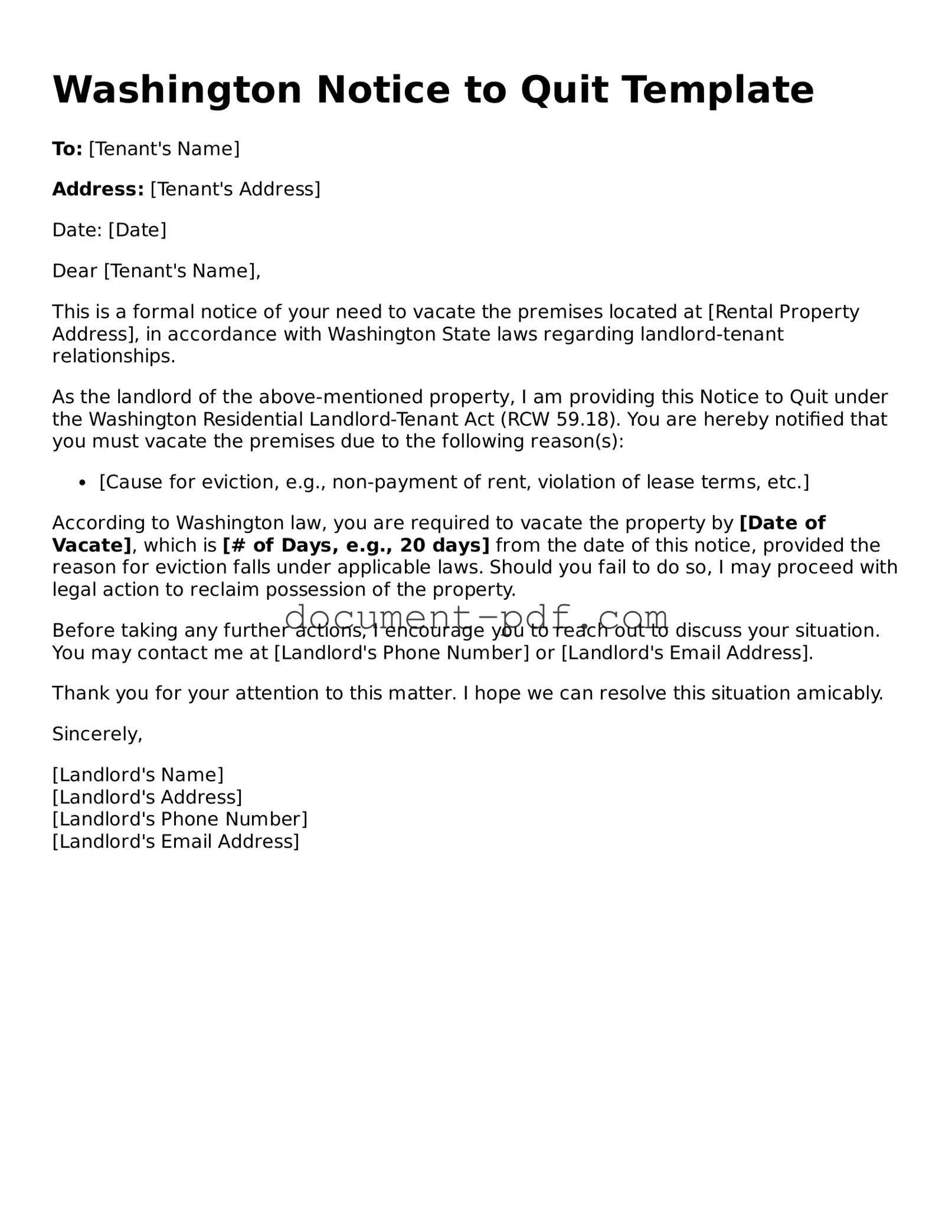Washington Notice to Quit Template
To: [Tenant's Name]
Address: [Tenant's Address]
Date: [Date]
Dear [Tenant's Name],
This is a formal notice of your need to vacate the premises located at [Rental Property Address], in accordance with Washington State laws regarding landlord-tenant relationships.
As the landlord of the above-mentioned property, I am providing this Notice to Quit under the Washington Residential Landlord-Tenant Act (RCW 59.18). You are hereby notified that you must vacate the premises due to the following reason(s):
- [Cause for eviction, e.g., non-payment of rent, violation of lease terms, etc.]
According to Washington law, you are required to vacate the property by [Date of Vacate], which is [# of Days, e.g., 20 days] from the date of this notice, provided the reason for eviction falls under applicable laws. Should you fail to do so, I may proceed with legal action to reclaim possession of the property.
Before taking any further actions, I encourage you to reach out to discuss your situation. You may contact me at [Landlord's Phone Number] or [Landlord's Email Address].
Thank you for your attention to this matter. I hope we can resolve this situation amicably.
Sincerely,
[Landlord's Name]
[Landlord's Address]
[Landlord's Phone Number]
[Landlord's Email Address]
